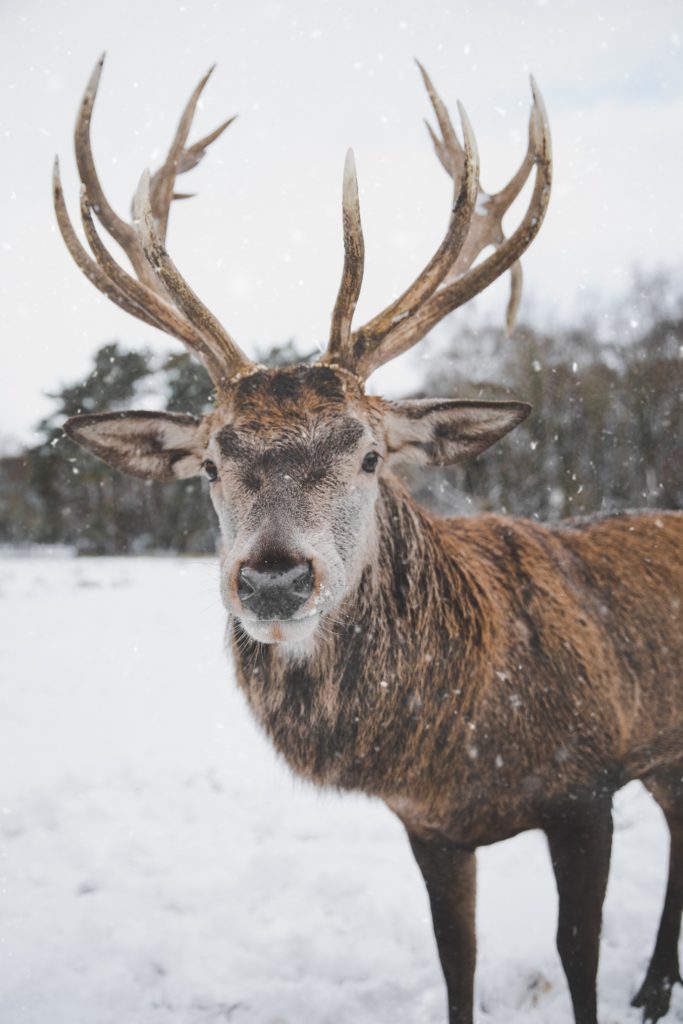All fields are required
Posted in Food Safety,Our Blog on November 26, 2018

Hunting season is upon us here in Virginia and with that comes the fact that there will be animals brought here to our home that have been harvested so that family and friends can process and start the preservation process so that they can be eaten. Whitetail Deer hunting is absolutely huge here. The day that many men and women wait for all year long. Here’s what you need to know about Wild Game Food Safety.
We have been fortunate enough to acquire a beautiful antique butcher block table that has been used (and abused) in the process of working with wild game harvests. We also have a menagerie of knives, disposable gloves, a jerky slicer, dehydrator, and a vacuum sealer among other tools of the trade that my husband has acquired over the years.
With harvesting and processing your own meats it is important to follow some food safety tips very carefully. For us the food safety begins in the field with properly dressing the deer. This includes proper disposal of any parts that you do not use. Next is another highly important step and that is keeping the carcass cool while traveling to your destination. We opened deer season here today with temperatures in the mid-70’s and high humidity so anyone who harvested today would have wanted to bring coolers and bags of ice to pack the carcass with. Also remember to be safe when dressing the deer and consider a portable handwashing station where you can clean up. Even with using gloves there will still be some mess involved.
Many people choose to “age” their meat which adds another step into the food safety process. You will want to keep the carcass at temperatures of 34-37 degrees for 10-14 days. While we do not practice this, we know many people who do and have great results. People believe that these processes allow the meat to become more tender. It is also recommended to not age wild game that has little or no fat present as it will dry out during the process.
The process that we use is to strip the meat from the actual bones of the carcass and store in the refrigerator for 24 hours. Remember to keep raw and cooked meats separate. We use disposable gloves when cutting up the meat and actual lay out disposable paper (think wax paper) on the table where we are working. This leaves for a great clean surface, but we also prewash and post-wash the table with a Lysol type cleaner that kills germs and bacteria. I feel it is imperative to make sure that surfaces are clean as ultimately this meat is not going to be inspected by anyone except us and it is our duty to both family and friends to make sure that this meat is treated with the most respect that we can.
When we make jerky the meat is put in a washable container with a lid to marinate. This process is kind of two-fold because it is cut from the bones, the fat is then removed and then put through the slicer to make each piece the same size. Accurate sizing for jerky is important so that everything dehydrates in the same amount of time and also ensures food safety there too as you would not want some pieces raw and others overly dry. When marinating I like to use glass containers with lids so that we can toss them into the dishwasher and make sure they are properly cleaned when the marinating process is over.
Jerky making is messy business, and I like to be sure that there is no cross contamination when adding the pieces onto the racks and getting that going. Again the Lysol type cleaners come in handy for surfaces to make sure that we are cleaning up well before and after.
Many people like to just cook their venison just like any other meat. Learning how to cook venison properly is really important just as any other meat. Here are some tips from Extension Daily to help you in your preparation process:
Another step in the harvesting process that some people do not think about is if you are going to preserve your kill in the form of taxidermy. Obviously you would not want to leave the head just laying around, so many people have a spare freezer to keep it in. This keeps all of the gross insects and other bacteria from growing and keeps your harvest in a beautiful state for the taxidermist. Be sure to wrap it in plastic (a black unscented trash bag works great) to keep it from contaminating anything in the freezer.
Remember to have a happy and safe hunting season and if you are not using your meats consider donating them to a cause that gives to those less fortunate. Many will take the whole deer after field dressing so that you have no work at all and this can feed many families in your area. This meat will be distributed in packages to local food banks and other charities.
By: Samantha Cooper, Contributing Writer (Non-Lawyer)